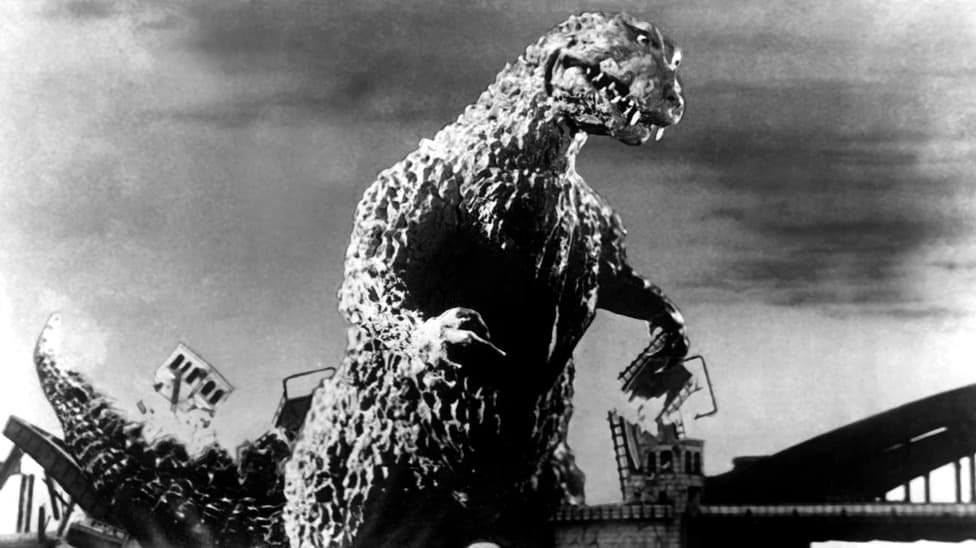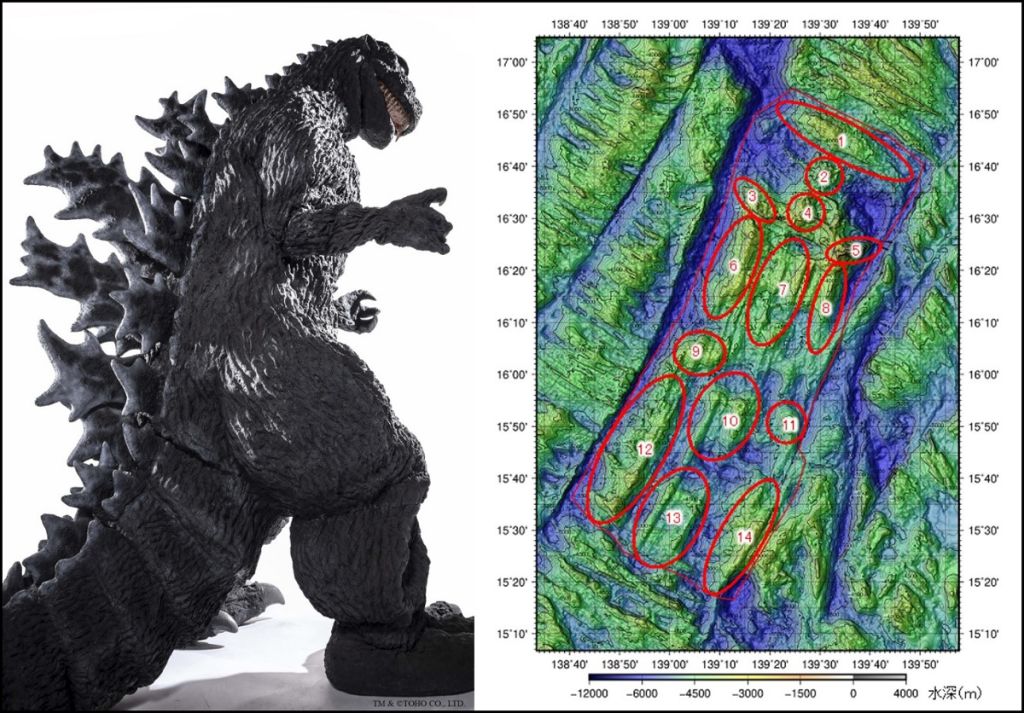
If you dive deep enough in the western Pacific Ocean, you may just come across Godzilla. A group of ridges on the seabed resembling the king of monsters was named after the beast’s body parts and will be officially recognized as such in nautical charts, the Japan Coast Guard announced in February.
The feature known as the Godzilla Megamullion Province is located in the Parece Vela Basin of the Philippine Sea, around 600 kilometers (370 miles) southeast of Japan’s southernmost coral reef, Okinotorishima. The ridges were first reported after a 2001 survey of the area by marine geologist Yasuhiko Ohara and colleagues from the Japan Coast Guard’s Hydrographic and Oceanographic Department, who undertook several research cruises in the area.
Also known as oceanic core complexes, megamullions are a relatively recent discovery, and scientists are still probing how they work. Megamullions are dome-shaped rises generally found along slowly spreading mid-ocean ridges. Characterized by ridgelike structures, megamullions are thought to form during spreading episodes when faults expose deep magmatic or mantle rocks on the seafloor.
Roughly 155 kilometers (100 miles) long by 55 kilometers (30 miles) wide, the Godzilla Megamullion has ridges reaching heights of 2,500 meters (8,200 feet).
“The Godzilla Megamullion is the largest known oceanic core complex on the Earth, and more than 10 times larger in area than those developed on the Mid-Atlantic Ridge,” said Ohara, citing a 2014 study he coauthored that describes the feature’s characteristics.
It may take a bit of imagination, or creative squinting, but you might be able to make out the shape of Godzilla lying face down on the seafloor.
Hat Ridge and Head Peak are next to two deeper areas above the monster’s shoulders, which are situated near roughly parallel rises that form its arms, backbone, hipbones, legs, and tail. “The individual 14 names were the result of a beautiful coincidence,” said Ohara.

An Ocean of Monikers
Japanese researchers chose the Godzilla moniker for both the feature’s enormous size and its relatively close proximity to the monster’s island of origin. In the 1954 sci-fi classic produced by Toho Co., Godzilla emerged from the sea near the fictional Odo Island, which some fans situate in the region of Okinotorishima.
Toho’s “chief Godzilla officer,” Keiji Ota, said in a statement last year that it was an honor for the megamullion to be named after the monster, which has appeared in more than 30 films. “As far as we know, it is the first time for such a feature [to be] named after a fictional monster,” said Ohara.
The Pacific is riddled with interesting nomenclature. Japan has the Shichiyo Seamount Chain, named after the days of the week. Off Hawaii’s coast one can find the Musicians Seamounts, honoring composers such as Beethoven, Mendelssohn, Tchaikovsky, and Gershwin. Farther south, a collection of vents west of Easter Island has been given the names of cartoon characters such as Homer Simpson, Scooby, Tweety, and Road Runner.
Standardizing Names
With a 2022 approval by the Sub-Committee on Undersea Features Names (SCUFN), part of the General Bathymetric Chart of the Oceans (GEBCO) Gazetteer, the 20-year wait for the Godzilla Megamullion to get an official name ended; the recent decision was related to the giant reptile’s individual body parts.
GEBCO was established in 1975 to create a uniform policy on name standardization. It falls to the SCUFN to recognize whether a proposed name is suitable.
“One can find names from mythology, flowers, painters, marine scientists, and famous historic people. It’s not easy sometimes to avoid sensitive issues,” said the International Hydrographic Organization’s Yves Guillam, who serves as SCUFN secretary. Despite Godzilla and Homer Simpson, he said, “in general, the SCUFN favors famous worldwide recognized high-level marine scientists, oceanographers, and hydrographers.…SCUFN efforts are driven to remain realistic, pragmatic, efficient, based on the available short resources allocated to the international recognition of undersea feature names.”
Scientists hope the Godzilla Megamullion will yield insights into the dynamics of back-arc basins.
This article originally appeared in Eos Magazine and was republished under a creative commons license.









